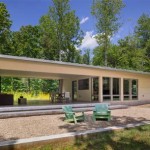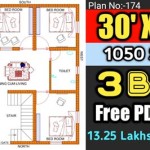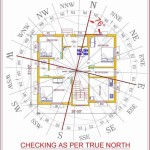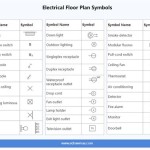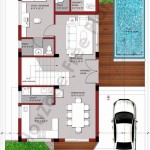Narrow Lot House Plans: 2-Story Design Considerations
The increasing density of urban areas and the rising cost of land have led to a greater demand for efficient and space-saving housing designs. Narrow lot house plans, particularly those featuring two stories, represent a practical solution for homeowners looking to maximize their living space on a smaller footprint. These designs present unique challenges and opportunities, requiring careful consideration of architectural principles, building codes, and homeowner lifestyle needs.
A narrow lot is generally defined as a parcel of land with a width significantly less than its depth. The specific dimensions that qualify a lot as "narrow" can vary depending on local zoning regulations. In many urban areas, available lots might be as narrow as 25 to 50 feet. Two-story house plans are a popular choice for these lots because they allow for a greater square footage of living space without increasing the building's ground-level footprint. This vertical approach is particularly advantageous in areas where land is scarce and expensive.
Designing a two-story house plan for a narrow lot requires careful planning and attention to detail. The architectural style, interior layout, and outdoor spaces must be carefully considered to ensure both functionality and aesthetic appeal. Furthermore, compliance with local building codes and zoning regulations is paramount. These regulations often dictate setbacks from property lines, height restrictions, and allowable building coverage.
Maximizing Space and Functionality in Narrow Lot Designs
The primary goal in designing a two-story house for a narrow lot is to maximize the available space and ensure that the home is both functional and comfortable. This often involves creative design solutions and thoughtful planning of the interior layout. Open-concept floor plans, which combine living, dining, and kitchen areas, are a common strategy for creating a sense of spaciousness. This layout eliminates walls and partitions, allowing for a more fluid and interconnected living area.
Vertical circulation, which refers to the movement between floors, is a critical aspect of two-story design. The placement of the staircase should be carefully considered to minimize its impact on the usable floor area. A centrally located staircase can serve as a focal point while also dividing the living areas. Alternatively, positioning the staircase along an exterior wall can free up valuable interior space. The design of the staircase itself can also contribute to the overall aesthetic of the home. Open risers and minimalist railings can create a lighter and more airy feel.
Storage solutions are another important consideration in narrow lot house plans. Built-in cabinets, shelving, and storage niches can help to maximize space and minimize clutter. Utilizing vertical space for storage, such as installing tall cabinets or shelving units, can be particularly effective. Under-stair storage is a common and practical solution for utilizing otherwise wasted space.
Natural light is essential for creating a bright and inviting living environment. Large windows and strategically placed skylights can help to maximize the amount of natural light that enters the home. Consider the orientation of the house on the lot to take advantage of passive solar heating and cooling. South-facing windows can provide warmth in the winter, while shading devices can help to reduce heat gain in the summer. In narrow lots where windows might be restricted by adjacent buildings, consider clerestory windows positioned high on the wall to bring in light without compromising privacy.
Outdoor spaces can be incorporated into narrow lot house plans to extend the living area and provide a connection to the outdoors. Balconies, decks, and patios can be designed to provide outdoor seating and dining areas. Vertical gardens and green walls can also be used to create a sense of greenery and privacy in a limited space. Consider the orientation of the outdoor spaces to maximize sunlight and minimize exposure to wind and rain.
Architectural Styles and Design Considerations
A variety of architectural styles can be adapted to narrow lot two-story house plans. The choice of style will depend on the homeowner's preferences, the surrounding neighborhood context, and local architectural guidelines. Some popular styles for narrow lot homes include modern, contemporary, craftsman, and traditional designs.
Modern and contemporary styles often feature clean lines, minimalist details, and large windows. These styles can be particularly well-suited to narrow lots, as they emphasize simplicity and efficiency. Flat roofs, which are common in modern designs, can also help to maximize vertical space and allow for the incorporation of roof decks or gardens.
Craftsman-style homes are characterized by their handcrafted details, natural materials, and emphasis on craftsmanship. These homes typically feature gabled roofs, exposed rafter tails, and wide porches. While craftsman homes can be adapted to narrow lots, it is important to consider the scale and proportion of the details to ensure that they are appropriate for the smaller footprint.
Traditional styles, such as Colonial or Victorian, can also be adapted to narrow lots. However, these styles often require more complex detailing and ornamentation, which can be challenging to incorporate into a limited space. Careful attention must be paid to the scale and proportion of the details to ensure that the home does not appear cluttered or overwhelming.
The exterior materials used in a narrow lot house plan can significantly impact its overall aesthetic and durability. Consider using low-maintenance materials that are resistant to weathering and require minimal upkeep. Brick, siding, stucco, and wood are all common choices for exterior cladding. The choice of materials should also complement the architectural style of the home and the surrounding neighborhood context.
The roof design is another important consideration in narrow lot house plans. Gabled roofs, hip roofs, and flat roofs are all common options. The choice of roof design will depend on the architectural style of the home, the local climate, and the homeowner's preferences. Consider using energy-efficient roofing materials to reduce energy consumption and improve the home's overall sustainability.
Navigating Building Codes and Zoning Regulations
Compliance with local building codes and zoning regulations is essential when designing a narrow lot house plan. These regulations dictate setbacks from property lines, height restrictions, allowable building coverage, and other important design parameters. Failure to comply with these regulations can result in costly delays and modifications to the design.
Setback requirements specify the minimum distance that a building must be set back from property lines. These requirements are designed to ensure adequate spacing between buildings and to maintain access for utilities and emergency services. Setback requirements can vary depending on the zoning district and the type of building. It is important to consult with local planning officials to determine the specific setback requirements for a particular property.
Height restrictions limit the maximum height of a building. These restrictions are designed to preserve views, prevent overshadowing, and maintain the character of the neighborhood. Height restrictions can vary depending on the zoning district and the type of building. In some cases, exceptions to height restrictions may be granted through a variance process.
Allowable building coverage refers to the percentage of the lot that can be covered by buildings. This regulation is designed to limit the amount of impervious surface on a property and to promote stormwater management. Allowable building coverage can vary depending on the zoning district and the size of the lot. Consider permeable paving materials and green roofs to reduce the amount of impervious surface on the property.
In addition to these general regulations, there may be specific requirements for narrow lot homes. These requirements may relate to the width of the building, the orientation of the building on the lot, and the design of the exterior facade. It is important to consult with local planning officials and building inspectors to ensure that the design complies with all applicable regulations.
Obtaining the necessary permits and approvals can be a complex and time-consuming process. It is important to start the permitting process early in the design phase and to work closely with local planning officials to ensure that the design meets all requirements. Consider hiring a qualified architect or engineer to assist with the permitting process.

2 Story House Plans For Narrow Lots Blog Builderhouseplans Com

2 Story House Plans For Narrow Lots Blog Builderhouseplans Com

Unique 2 Story Narrow Lot Plan 69090am Architectural Designs House Plans

Simple Narrow Lot House Plans Houseplans Blog Com

Floor Plan Friday Narrow But Large 2 Y Home House Plans Designs Lot

Narrow Lot Two Y House Plan With 4 Bedrooms Cool Concepts Plans Modern Floor

Plan 051h 0211 The House

2 Story Narrow Lot House Plans Under 40 Feet Drummond

Cool House Plans Offers A Unique Variety Of Professionally Designed Home With Floor By Narrow Lot Mini

2 Story House Plans For Narrow Lots Blog Builderhouseplans Com

